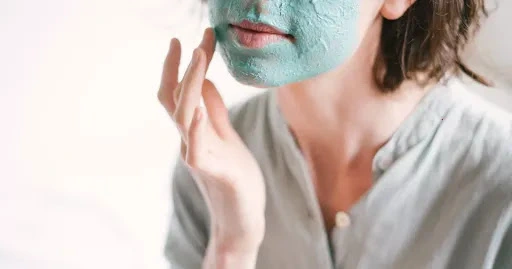How To Make Your Own Natural Acne Mask
Dealing with persistent acne can be frustrating, and the cost of commercial acne treatments can add up quickly. Moreover, many of these products contain chemicals that may disrupt your skin’s delicate pH balance. To circumvent these issues, we present an easy-to-follow recipe for creating your very own homemade acne-fighting mask using all-natural ingredients.
Ingredients for Your Homemade Acne Mask
Gather the Essentials for Clearer Skin
To create your natural acne mask, you’ll need the following ingredients:
Tea Tree Oil: Nature’s Antibacterial Hero
Harness the Power of Tea Tree Oil
- 10-12 drops of tea tree oil: This potent antibacterial and antifungal agent is highly effective in treating acne.
Lemon Juice: A Bacterial Banisher
Boost Your Mask with Lemon Juice
- 1 tablespoon of lemon juice: Lemon juice helps kill bacteria and provides a refreshing boost to your skin.
Optional Ingredient: Raw Potato Juice
Consider the Benefits of Raw Potato Juice
- 2 tablespoons of raw potato juice (optional): Known for its natural anti-inflammatory and anti-irritant properties.
Apple Cider Vinegar: Your Skin’s Bacteria Buste
Utilize the Power of Apple Cider Vinegar
- 4 tablespoons of apple cider vinegar: Helps eliminate bacteria and regulates skin oil levels.
Did You Know?
Apple cider vinegar, a key ingredient in the natural acne mask, is renowned for its ability to balance the skin’s pH levels. When applied topically, it helps restore the skin’s natural acidity, creating an environment that is less conducive to the growth of acne-causing bacteria
Honey: Nature’s Antibacterial Marvel
Tap into the Antibacterial Properties of Honey
- 2 tablespoons of honey: Renowned as one of nature’s most powerful antibacterial agents.
Cucumber: A Pore-Purifying Ingredient
Incorporate Cucumber for Pore Health
- 3 slices of cucumber: Cucumber’s alkaline properties are excellent for opening pores.
Oatmeal: Soothe and Heal
Add Oatmeal for skin-soothing
- ¾ cup of oatmeal: Oatmeal is a time-tested remedy for soothing irritated skin, burns, allergies, inflammation, and redness.
Water: The Binder for Your Mask
Use Water to Create the Perfect Consistency
- Water: Add enough water to form a fine paste.
Preparing Your Homemade Acne Mask
Simple Steps to Craft Your Mask
Follow these steps to create your natural acne mask:
- Place all the ingredients in a blender.
- Add enough water to create a smooth paste.
- Transfer the paste into a plastic container with a tight-fitting lid.
- Store it in the refrigerator for up to a week.
Application and Results
How to Apply and Enjoy Clearer Skin
- Apply a small amount of the mask to a clean face.
- Leave it on for 10 to 15 minutes.
- Rinse thoroughly with lukewarm water.
- Gently pat your skin dry with a soft towel.
Affordable Acne Relief, Naturally
Say goodbye to expensive and chemical-laden acne treatments. With this homemade natural mask, you can enjoy clearer skin without breaking the bank. Incorporate this cost-effective solution into your skincare routine to achieve a refreshed and revitalized complexion.
Precaution: “Perform a Patch Test”
Before applying the homemade natural acne mask to your face, it’s essential to perform a patch test. Apply a small amount of the mask to a discreet area of your skin, such as the inside of your wrist or behind your ear. Wait for at least 24 hours to ensure that you do not experience any adverse reactions, such as redness, itching, or irritation. If you notice any negative effects during this period, refrain from using the mask on your face. Patch testing helps identify potential allergies or sensitivities to the ingredients and ensures the safety of your skincare regimen.

